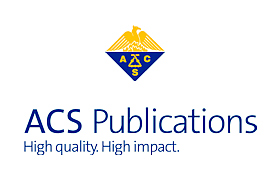Research Article
 Nonpsychotropic Plant Cannabinoids, Cannabidivarin (CBDV) and Cannabidiol (CBD), Activate and Desensitize Transient Receptor Potential Vanilloid 1 (TRPV1) Channels in Vitro: Potential for the Treatment of Neuronal Hyperexcitability
Nonpsychotropic Plant Cannabinoids, Cannabidivarin (CBDV) and Cannabidiol (CBD), Activate and Desensitize Transient Receptor Potential Vanilloid 1 (TRPV1) Channels in Vitro: Potential for the Treatment of Neuronal Hyperexcitability
Abstract
![]() Epilepsy is the most common neurological disorder, with over 50 million people worldwide affected. Recent evidence suggests that the transient receptor potential cation channel subfamily V member 1 (TRPV1) may contribute to the onset and progression of some forms of epilepsy. Since the two nonpsychotropic cannabinoids cannabidivarin (CBDV) and cannabidiol (CBD) exert anticonvulsant activity in vivo and produce TRPV1-mediated intracellular calcium elevation in vitro, we evaluated the effects of these two compounds on TRPV1 channel activation and desensitization and in an in vitro model of epileptiform activity. Patch clamp analysis in transfected HEK293 cells demonstrated that CBD and CBDV dose-dependently activate and rapidly desensitize TRPV1, as well as TRP channels of subfamily V type 2 (TRPV2) and subfamily A type 1 (TRPA1). TRPV1 and TRPV2 transcripts were shown to be expressed in rat hippocampal tissue. When tested on epileptiform neuronal spike activity in hippocampal brain slices exposed to a Mg2+-free solution using multielectrode arrays (MEAs), CBDV reduced both epileptiform burst amplitude and duration. The prototypical TRPV1 agonist, capsaicin, produced similar, although not identical effects. Capsaicin, but not CBDV, effects on burst amplitude were reversed by IRTX, a selective TRPV1 antagonist. These data suggest that CBDV antiepileptiform effects in the Mg2+-free model are not uniquely mediated via activation of TRPV1. However, TRPV1 was strongly phosphorylated (and hence likely sensitized) in Mg2+-free solution-treated hippocampal tissue, and both capsaicin and CBDV caused TRPV1 dephosphorylation, consistent with TRPV1 desensitization. We propose that CBDV effects on TRP channels should be studied further in different in vitro and in vivo models of epilepsy.
Epilepsy is the most common neurological disorder, with over 50 million people worldwide affected. Recent evidence suggests that the transient receptor potential cation channel subfamily V member 1 (TRPV1) may contribute to the onset and progression of some forms of epilepsy. Since the two nonpsychotropic cannabinoids cannabidivarin (CBDV) and cannabidiol (CBD) exert anticonvulsant activity in vivo and produce TRPV1-mediated intracellular calcium elevation in vitro, we evaluated the effects of these two compounds on TRPV1 channel activation and desensitization and in an in vitro model of epileptiform activity. Patch clamp analysis in transfected HEK293 cells demonstrated that CBD and CBDV dose-dependently activate and rapidly desensitize TRPV1, as well as TRP channels of subfamily V type 2 (TRPV2) and subfamily A type 1 (TRPA1). TRPV1 and TRPV2 transcripts were shown to be expressed in rat hippocampal tissue. When tested on epileptiform neuronal spike activity in hippocampal brain slices exposed to a Mg2+-free solution using multielectrode arrays (MEAs), CBDV reduced both epileptiform burst amplitude and duration. The prototypical TRPV1 agonist, capsaicin, produced similar, although not identical effects. Capsaicin, but not CBDV, effects on burst amplitude were reversed by IRTX, a selective TRPV1 antagonist. These data suggest that CBDV antiepileptiform effects in the Mg2+-free model are not uniquely mediated via activation of TRPV1. However, TRPV1 was strongly phosphorylated (and hence likely sensitized) in Mg2+-free solution-treated hippocampal tissue, and both capsaicin and CBDV caused TRPV1 dephosphorylation, consistent with TRPV1 desensitization. We propose that CBDV effects on TRP channels should be studied further in different in vitro and in vivo models of epilepsy.
Keywords:
Cannabinoid; TRP channels; epilepsy; patch clamp; multi electrode arrays (MEAs)



